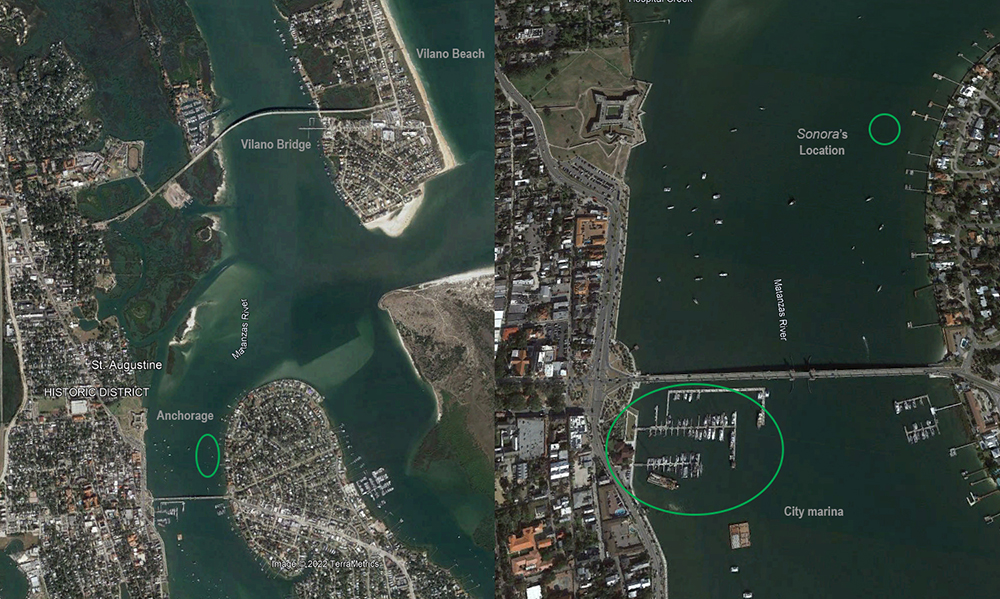
I have a friend who is a sailmaker and a great cruiser with extensive experience sailing the US east coast. Sebastian had told me a month ago that “everything starting at Beaufort and further south are expert level anchorages.” This conversation felt like it was an eternity ago, and it felt as if I was sitting in a different world when I was listening to him. But I took that advice seriously. It really put me in the right mindset. I decided that I’ll never be lazy with anchoring. And to always double check everything in my ground tackle. Unlike how I was several years ago, I now have ‘above average’ experience as a sailor and the cautiousness of a commercial sailor. The biggest thing this added level of competence had brought me is doing more careful research and asking a lot of questions. And making friends with experienced people. I don’t think you can be a great sailor without listening to people around you.
This is the second night where at least one boat dragged their anchor and hit another boat. On the cruiser net, someone asked what the gusts were like Saturday night. It wasn’t that bad, I thought it was twenty five knots. My boat took it in stride. Despite this, someone’s big-windage boat dragged anchor and hit another boat. Today is much worse. Few of the gusts are easily thirty-five knots, with the majority of the winds being at least twenty. Technically, the average wind speed is lower, but it is one of those days where the gusts outnumber the average wind speed. The sea state at anchor is a sharp two to four feet.
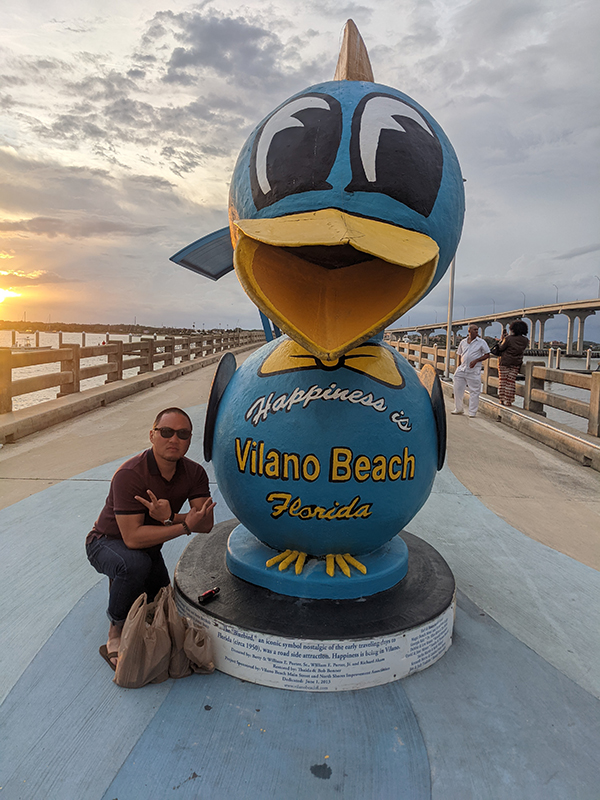
Last night, a friend of mine came to visit me from Tampa. I had a lot of fun exploring Vilano beach. I got to stay on land at a hotel! But I woke up and saw the enormous waves crashing in at Vilano beach, and immediately worried about my boat. I hurriedly returned to the city marina where my dinghy was tied to. I crashed through the waves and haphazardly made it back to Sonora. I was soaking wet, but the pitching boat still felt like home. Most importantly, she hadn’t budged an inch from where I had anchored her.
I started the engine up and started looking around. Boats were swinging and changing direction. I had picked this spot to anchor mostly because of Sebastian’s advice, but also because the other boats around me looked to be saltier. I figured I could count on them to have good ground tackle. One of these boats was a dark-hulled ketch rigged cruiser. I went up to the bow to let out more rode, and watched the ketch picked up their anchor and leave. The boat came pretty close to my boat. I could see the look on the crewmembers, both men much older than me; they looked tired, worried, and very upset. What a bad day for them.
There was a pier that was about two hundred meters from my anchor. My boat swung towards it and it looked really close. A moment went by, and Sonora swung away from the pier. Without the ketch, I didn’t think Sonora would hit other boats. But that pier still looked like a threat. I got my bungee cords out and lashed down my mainsail bag. Then I took down the club ensign and the US yacht ensign. Both of these actions were to reduce my windage.
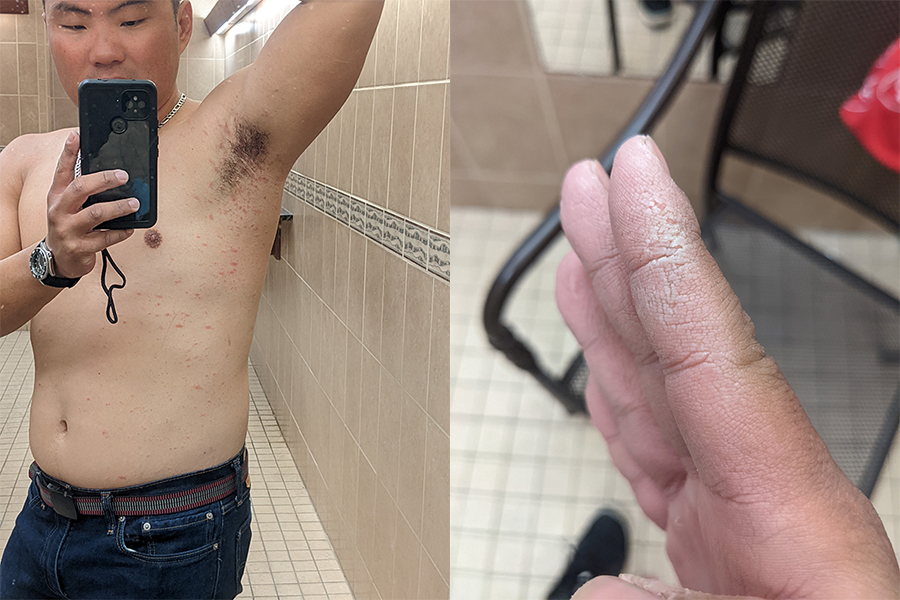
Then I moved my rode from the fairlead to my bow roller to reduce any tendency of my boat to take the wind from an angle, as that can generate lift and ‘sail’ the boat forward. I’m pretty confident of my ground tackle, but I’m still worried about chafe, so I cut a piece of garden hose that I had bought in Beaufort, and shoved it between my rode and the anchor shank cradle. After all this was done, I sat around thinking through all of my options. Should I re-anchor? Is this a bad spot? If I had to leave, where would I go? These thoughts raced through my head as the wind continued to howl through my rigging, the boat still pitching up and down.
My boat raced around the two hundred feet of anchor radius. When I say raced, I really do mean it. It was always bow-first, with the rode pointing off to one side and sternward. The way the current and wind interacts here is crazy, and the result is that boats move around as if they were angry dogs that’d been chained. I left the track on my navigation app on and waited for a while. Somehow, despite the various directions my anchor was being pulled from, the boat stayed put on her tether. But being on my boat also made me wonder – how do I even weigh anchor by myself in these conditions? I thought about this topic all day, and this is what I came up with.
- have engine running and on stand by. Center rudder, or whatever you need to keep the boat heading steady. In this anchorage, the current dictates where your boat points. Its important to have your boat’s helm centered.
- haul in the rode as hard as I could. Use my legs and back.
- when the boat pitches up or gets hit with a hard gust, make fast the rode and wait. A few loops around the power cleat should do it.
- when I get some slack, take up the slack and make fast again. Repeat this process.
- Eventually, when the scope is close to 1:1 to 1.5:1, the anchor will detach from the bottom just from the wave action alone. But if not, make fast and drive the boat over the anchor and unset the anchor as you would in any other situation.
- get the anchor up on the roller and secure. Run back to the cockpit and drive the boat away from anything I could hit!
- throughout the process, take my time and be careful. Don’t lose any fingers or toes.
Thinking through this step-by-step gave me some confidence. And with Sebastian’s advice, I knew this was the best anchorage when the northerlies blow. So stay, I shall.
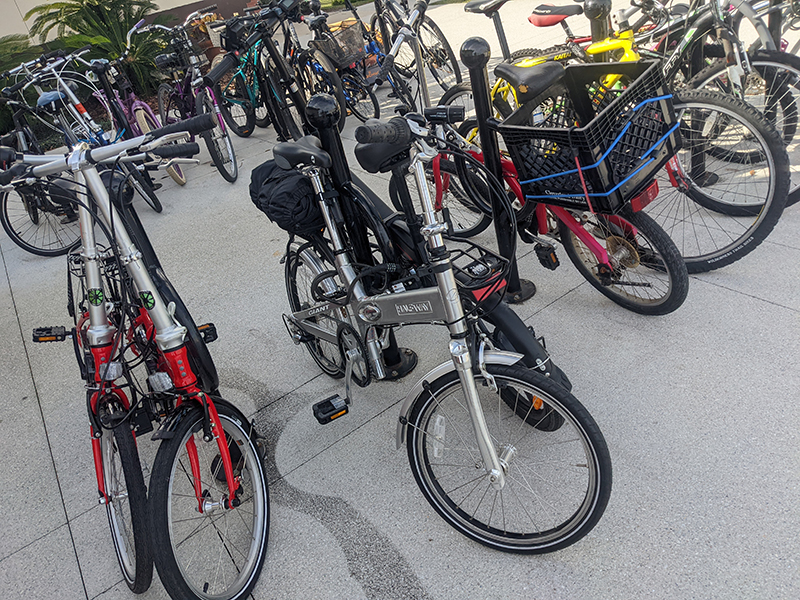
What is absolutely bonkers to me is the amount of really inexperienced people I’ve run into. Later that evening, I met a lady that had come off of their family’s catamaran. Without having sailed anything before, they’d just bought a huge catamaran some weeks ago and picked up an experienced friend as captain. They sailed the boat down from Maine intending to get to Marathon. This boat dragged anchor and hit another boat yesterday. Today, a few more boats hit other vessels and a channel marker. I bet all of these boats are boats that have not been shaken out, and have inexperienced crew.
I try to be careful when I’m criticizing poor seamanship. Most of the times, I’m not there to see firsthand what happened. And I’ve been handed a pretty good hand in life. Above all else, I’m lucky, and just smart enough to know I need to listen to other people. I also love reading. I soak up information like a sponge if it is a subject I’m interested in. I’m even luckier that I decided to slowly build up my skill doing trips that were progressively daunting. In fact, I can’t imagine doing this trip even just four years ago, when I already had many years of sailing experience. Much of these traits that led me to this sort of progression was innate. I didn’t earn it. So like I said, I try to be careful when I think criticism may be warranted. But this evening, I was there, riding out the exact same storm that everyone else was.
I blame social media. Social media promotes distribution of visually impressive content. It makes it look easy. It makes people want to skip through the seemingly arduous and boring process of learning. People think: how hard could it be?
Here is my advice for lesser experienced sailors. Sailing is hard. Sailing can be dangerous. People really do perish at sea. But people who die don’t stick around to make YouTube videos or blog posts about it. So we don’t really hear too much about that part of sailing. Even experienced sailors lose their boats that they spent years of blood, sweat, and green paper tears into fixing up. And mother nature throws these difficult situations indiscriminately, regardless of your skill level. Sometimes social media content purports to show you the hard parts. In reality, it can’t even scratch at the surface of what its really like out there. After all, who has time to get a camera out in a truly bad situation?
If you’ve gone sailing on Sonora and it looked easy, that is probably at least partly because I am making decisions that make it look smooth and easy. You can do exactly the same trip with other people on a different boat and have a completely different experience. And it takes some experience and skill to make things go smoothly, and smooth is what you want. Because at some point, things will not go smooth no matter how skilled or bad ass you are. I’d like to tell all the hopeful cruisers out there this piece of advice: build up your skill on smaller boats and do easier, shorter trips. Take baby steps. Otherwise, the learning is expensive, demotivating, and dangerous to you and others. Don’t be one of those people who are over-committed because they sold everything and bought a boat. That is by far the most inefficient way to learn how to sail.
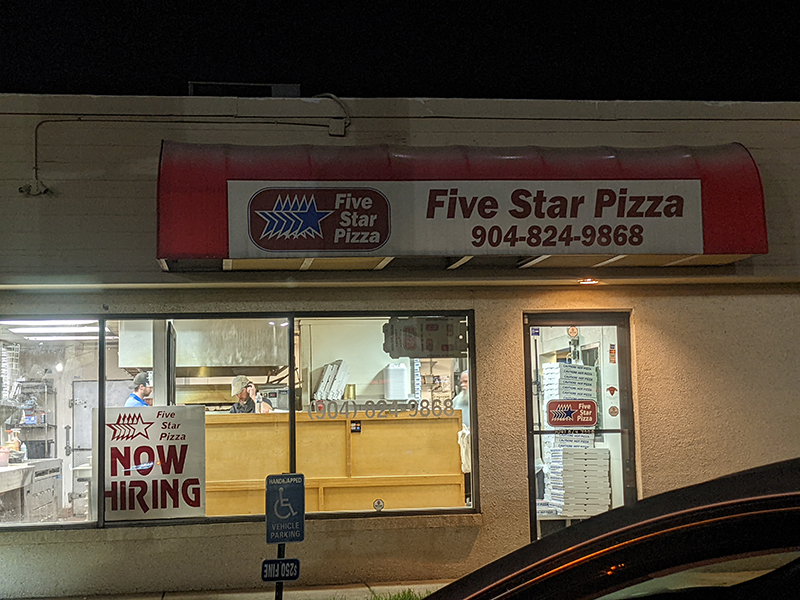
At some point in the day, I went back ashore to do the day’s errands, with a twinge of guilt for leaving my boat unattended. Now downwind, the dinghy would get pushed by a wave, bury its bow and take on a lot of water/ I shifted my body weight to prevent this from happening.
Being on land on days like this is such a contrast. Everything is so quiet and still. Life, largely goes on. People are still at restaurants eating, unaware of the carnage that is happening just a few hundred meters away. My mind and body were still out there at the anchorage. My head was still looking for danger, and my body braced for movement that never came. But it was still here. And quiet. A wave of numbness washed over me. A few hours later, all my clothes are washed, dried and folded. Fifteen gallons of fuel have been loaded onto the dinghy. Even my salty foul weather gear has been rinsed and dried, though this was silly since they were destined to get wet again on my trip back.
While on land, I browsed the local social media pages to see if there was anything going on. Someone uploaded a picture of an ICW channel marker, broken and floating north. In the background, I saw a small sailboat. Blue canvas work, beige hull, distinctive yellow man-overboard bag at the pushpit. . . it was Sonora! If I had hair on the back of my neck, they’d all have been standing straight! Did my boat drag and hit the marker? I ran to my bicycle and cycled out to the Bridge of Lions. And there she was, right where I left her. In fact, there was a ton of room in all directions, especially since the ketch left.
Just east of Florida, there is a strong tropical current called the Gulf Stream that moves north at anywhere from two to four knots. Its substantially wide too– the width of this current can vary from fifty to a hundred nautical miles. If there is any northerly component to the winds, the waves pick up disproportionately. I would need a few days of either becalmed conditions, or good winds from the south. Moreover, I am an idiot. I wanted a challenging passage from St. Augustine, instead of heading to Southern Florida to cross into the Bahamas. It would take me three days instead of half a day. This meant I would have to turn South after I crossed the ‘stream. Which makes a true South wind problematic. Needless to say, I had to be patient about the weather.
I couldn’t not make up my mind; is waiting for a weather window a curse, or a blessing? Waiting eats up my available time for this cruise, but I also would have never explored St. Augustine if I hadn’t had to wait so long. I can’t say I enjoyed all of it. The nice parts of St. Augustine are really nice, but the other parts are not. Even in the nice parts, the crowd on the weekend is absolutely insane. It was Christmas season, though the lights, live-sung carols, and the festive atmosphere barely registered in my head — I was trying to get away from this sort of thing. But the season drew in a huge crowd. I saw so many people walking around, standing in line at restaurants, coughing and sniffling, and covering their mouths with their t-shirts. Somehow none of the horse drawn carriages, cars, motorcycles, rental scooters seemed to collide with any of the pedestrians. I really did not want to get COVID-19. Not only did I despise the idea of getting sick and spreading it to others, I also didn’t want to get sick and have to postpone my crossing into the Bahamas.

But St. Augustine had its charms. I managed to find a reasonably priced Cuban sandwich place and a coffee shop where there was some semblance of a sit-down area. I haven’t had a real Cuban since I left Florida! I shall frequent these establishments. And Sonora was no longer a dry vessel! I bought a bottle of Vodka and a bottle of local Rum. If I had to give up a bottle at customs in the Bahamas, I’d give up the rum. Undoubtedly, there would be better rum in the Caribbean. Vilano beach was a little bit sad. It was one of those places that must have been more popular in the past, but felt like a ghost town today.
I sat at the marina lounge and did a lot of the paper work I needed to do. I bought my travel health insurance and sea-rescue insurance. There at the lounge I planned out my remaining few days. I still had to get the travel permits and the COVID-19 test that was required for entry to the Bahamas. Lastly, I’d fully cycle Sonora‘s fresh water tanks. If I have time, I wanted visit the Sailor’s Exchange. This chandlery was a well-known, legendary chandlery full of used sailboat parts. If you’ve seen the culturally iconic movie Fast and the Furious, the best analogy I could make is that the Sailor’s Exchange is the ‘Racer’s Edge‘ for sailboat people.
With one hour before the lounge closed, I wondered if all the wrecked sailboats in St. Augustine provided a steady supply of used parts for the Sailor’s exchange. Then I read my Bahamas cruising guide, relaxing and daydreaming about clear waters and all the beautiful reefs before I had to do another scary dinghy ride back to Sonora.
Ensign – Flag
Fairlead – A device that guides lines to prevent it moving. It is typically a hole or a hook of some sort.
Racer’s Edge – see this clip on YouTube